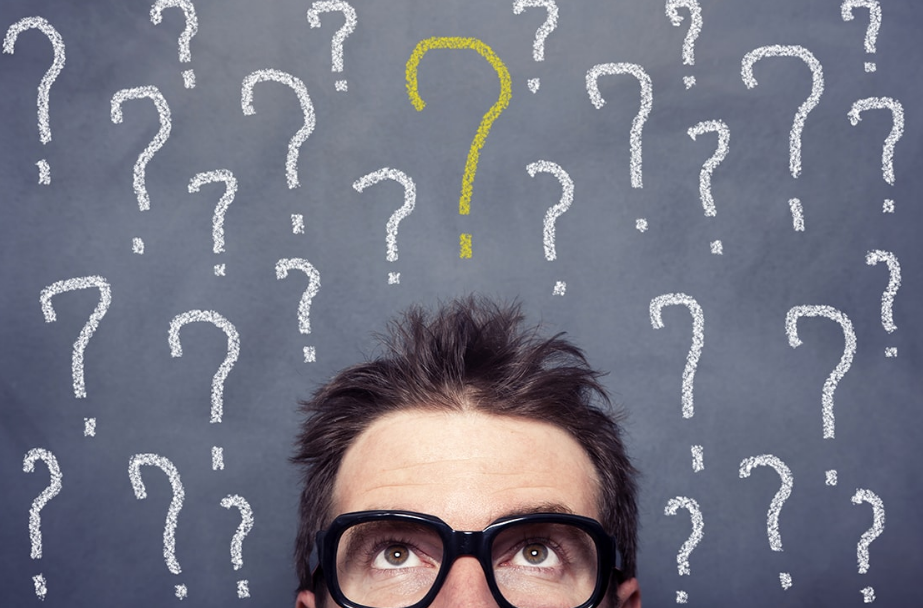Learn more about the compulsive buying disorder
Do you find yourself frequently succumbing to the allure of a ‘great deal’ or the thrill of a shopping spree, only to feel a pang of guilt or financial stress later?
Let’s consider the possibility that you might be grappling with a shopping addiction.
Recognizing the signs can be challenging, but it’s an essential first step.
We’re here to guide you through a self-check, helping you understand the psychological triggers, the emotional and financial implications, and most importantly, how to regain control.
Let’s tap into this vital discussion – it might just be the reality check you need.
Understanding Shopping Addiction
Deciphering the web of shopping addiction, it’s crucial for you to understand that this is more than just a fondness for retail therapy, it’s a serious psychological condition that can have profound implications on your life.
The addiction causes you to feel a compulsive urge to shop, often leading to financial stress and strained relationships. It’s not just about the temporary high of a new purchase, but a continuous cycle of buying, regret, and more buying.

There are various treatment options available and it’s important to bear in mind that seeking help isn’t a sign of weakness, but a step towards freedom. Therapy can help you understand the triggers and develop healthier coping mechanisms.
Cognitive-behavioral therapy (CBT) is a common approach, focusing on changing negative thought patterns and behaviors. Self-help groups can also provide you with a supportive network of individuals who are dealing with the same issues.
You’re not alone in this struggle, and it’s possible to regain control over your shopping habits. Keep in mind, acknowledging the problem is the first step towards recovery. Understanding shopping addiction is the initial step to your journey to freedom.
The Psychology Behind Shopping
Now that we’ve explored the concept of shopping addiction, let’s shift our focus to the intriguing science behind your shopping behavior.
There’s a fascinating world within the domain of consumerism psychology that not only fuels your shopping desires but can also lead you down the path of impulse buying.
Retailers are well-versed in consumer psychology and they use this knowledge to their advantage. They create an environment that sparks your desire to buy. This can range from the strategic placement of products to the use of specific colors and scents that evoke certain emotions.
But it’s not just about the external influences.
Your own psychology plays a crucial role, too. For instance, shopping can provide a quick fix for negative feelings, leading to buying things you don’t necessarily need. It’s a short-term solution, and it’s a part of why impulse buying is so prevalent.
Understanding this psychology is the first step to taking control.
You’re not just a passive player in the world of consumerism. With awareness, you can start making more deliberate decisions, resisting the pull of impulse purchases, and ultimately achieving the freedom you desire from shopping addiction.
Common Triggers of Shopping Addiction
In order to better manage your shopping addiction, it’s essential to identify the common triggers that might be fueling your compulsive buying habits.
These addiction triggers can vary, but often they revolve around emotional states or situations that spur impulsive buying.
Feeling stressed or anxious?
Shopping can seem like a quick fix to elevate your mood. You may find that a new purchase provides a temporary rush, a momentary distraction from life’s pressures. However, this is a short-lived solution and often leads to a cycle of buying and regretting.

Likewise, feeling bored or lonely can be a major trigger. Shopping, especially online, can feel like a social activity, filling a void of loneliness or monotony. It’s an easy trap to fall into, one click and you’re momentarily satisfied.
Sales and bargains can also be enticing.
The thrill of scoring a deal can be addictive in itself, often leading to unnecessary purchases.
Are You Spending Beyond Your Means?
Are you finding yourself frequently maxing out your credit cards or dipping into your savings for non-essential purchases?
This behavior could indicate that you’re spending beyond your means. This is a common symptom of shopping addiction, but it’s also a dangerous financial habit that can lead to long-term financial instability.
Your credit card usage can give you significant insight into your spending habits. If your cards are constantly hitting their limits, it’s a clear sign that you’re spending more than you can afford. It’s essential to understand that credit isn’t free money – it’s borrowed money that you’re obligated to repay, often with high interest.
Budget planning is a powerful tool to combat overspending. It helps you define your income, plan your expenses, and allocate funds accordingly.
When you have a clear picture of your financial situation, you can make more informed decisions about your purchases. That shirt might seem like a bargain, but is it worth jeopardizing your budget?
It’s all about finding a balance between enjoying the freedom to buy what you want and ensuring your financial health. Keep in mind, the goal isn’t to stop spending entirely, but to spend wisely and within your means.
Telltale Signs of a Shopaholic
Peeling back the layers of shopping addiction, you’ll find several telltale signs that might indicate you’re a shopaholic. One such sign is a persistent pattern of ‘Shopaholic’s Denial’.
You might downplay the amount of money you spend, or dismiss the frequency of your shopping trips. You might even deceive yourself into thinking that you’re shopping for necessities when you’re actually buying luxuries.
Another sign is the overwhelming influence of social pressures, or ‘Social Influence’.

You may find yourself buying things to keep up with trends or to fit in with your social circle. Your shopping habits might even be dictated by the perceived expectations of others, leading you into a whirlwind of excessive spending.
You may also experience guilt or discomfort when not shopping.
The lack of shopping might make you restless, and your mood might brighten only after a purchase. If shopping has become a go-to solution for your stress, sadness, or boredom, it’s another red flag.
These signs don’t necessarily mean you’re a shopaholic, but they’re cause for concern. Acknowledging these symptoms is the first step towards reclaiming your freedom from shopping addiction.
Self-check: Your Shopping Habits
Let’s take a closer look at your shopping habits to better understand if they might be indicative of a shopping addiction.
Do you shop only when you’ve planned it, or do you often find yourself making unplanned purchases? This impulse buying can be a significant sign of a shopping addiction.
Take note of how often you go shopping.
Is it a weekly routine, or do you find yourself hitting the stores more often? Do you stick to your shopping list, or do you usually end up with items that weren’t on it? These could be red flags that your shopping habits are veering into addiction territory.
Now, consider your budgeting techniques.
Are you able to stick to your budget, or do you frequently exceed it? Do you find yourself making purchases even when you can’t afford them, or using credit impulsively, leading to a cycle of debt?
Emotional Consequences of Shopping Addiction
Delving into the emotional aftermath of shopping addiction, you might find yourself grappling with feelings of guilt, anxiety, or depression.
It’s an emotional fallout that’s much more than buyer’s remorse. You’re living in a constant state of worry, fretting over your uncontrollable urges to shop and the chaos it’s creating in your life.
These negative emotions are a signal, urging you to address the root cause of your addiction. It’s not just about the thrill of a new purchase. It’s a coping mechanism, a way to fill a void or escape from stress. But it’s a short-term fix, and when the initial thrill fades, you’re left with an emotional hangover.
The guilt sets in as you recognize the harm your addiction is causing, not just to your wallet, but to your emotional wellbeing.
The anxiety builds as you anticipate the next shopping spree. And if left unchecked, a deeper sense of depression may creep in.
The emotional consequences of shopping addiction are serious and far-reaching, but acknowledging them is the first step to reclaiming your freedom. In the end, it’s not about controlling your shopping habits, it’s about regaining control of your life.
Financial Implications of a Shopping Problem
While the emotional impact of shopping addiction is certainly profound, it’s also important to consider the financial implications this issue can bring into your life.
You might find yourself buried under a mountain of credit card debt. With every swipe, you’re not just buying an item, but also the interest that comes with it. This habit can quickly spiral out of control, leaving you with a debt you struggle to clear.

But credit card debt is just the tip of the iceberg.
If left unchecked, a shopping addiction can push you towards the dangerous territory of bankruptcy. The risks of bankruptcy are real and can be devastating. It’s not just about losing money, it’s about the freedom you lose when financial control slips from your hands.
Being bankrupt can limit your opportunities, affect your ability to get loans, and even influence future employment.
Strategies for Controlling Shopping Urges
In the face of such overwhelming financial repercussions, it’s essential that you learn effective strategies to rein in your shopping urges. Harnessing impulse control is key.
Don’t feel compelled to buy something just because it’s on sale. If it wasn’t on your list to begin with, it’s not a bargain.
Next, find healthy ways to handle stress. Instead of resorting to retail therapy, why not practice actual therapy? Try meditation, exercise, or journaling.
These activities can help manage your emotions without draining your wallet. Moreover, they provide a sense of freedom, allowing you to escape the shackles of uncontrollable shopping urges.
Also, consider using a cash-only system.
This can create a tangible connection with your money, making it harder to part with. With this, you’re less likely to make impulsive purchases.
Seeking Professional Help for Shopping Addiction
If you’re finding it difficult to curb your shopping addiction with self-help strategies, it’s time to contemplate seeking professional help.
This isn’t a sign of weakness but rather a step towards achieving freedom. Therapists can provide you with structured therapy approaches that are specifically designed to deal with addiction.
Cognitive-behavioral therapy, for instance, can help you identify the triggers that lead to excessive shopping and teach you how to manage these triggers effectively.

You’ll learn to replace negative thought patterns with positive ones, which will help you resist the urge to shop excessively.
In addition, joining support groups can be extremely beneficial.
These groups provide a safe space where you can share your experiences and struggles with people who understand what you’re going through. You can gain insights from those who’ve been in your shoes and have successfully overcome their addiction.
In Closing
Recognizing a shopping addiction isn’t easy, but you’ve taken the first step. It’s important to understand the triggers and emotional toll it takes.
If left unchecked, it can wreak havoc on your finances. But don’t worry, help is at hand. By adopting strategies to control your urges and seeking professional help, you can regain control over this aspect of your life.
You’ve got this!

